Comments/Ratings for a Single Item
If that's in reference to your Bullet, I've been thinking about that. Like today's Yey, it'd be an interesting Pawn or Superpawn type piece.
anybody reads this? can use it if u want… but I recommend to rename and put in another game
Extra information about Clue Chess that may or may not be relevant:
- The board is 25x25, with special spaces for the Rooms and blacked-out spaces around the players' starting areas (except in front).
- Similar to regular Clue(do), there can be anywhere from 2 to 8 players.
- There will be only one of each weapon; they start neutral, in starting places on the board.
- When a player captures a weapon piece, that player's King gains the abiltiies of that piece.
- There will be no limit on how many weapons the King can carry (as of this moment, anyway).
- I haven't fully decided yet what happens to the weapons when the King is captured. The King itself is returned to its starting square, and I'm inclined to do the same with the weapons, though I may decide on something else.
- It may or may not be allowed to move the weapons as independent, "neutral" pieces. If it is, it'll be move-without-capture only.
Feedback on these rules wouldn't be entirely unwelcome, though for now I want to focus on selecting the eighth weapon.
And now, a question that's been nagging on me for a while: Which should be the eighth (and final) weapon piece in my Clue Chess game?
So far I have seven weapons selected: the six from the classic game, and one that's appeared in the most variant versions:
- Candlestick (mK2cafmK)
- Dagger (mK2mafcabK)
- Lead Pipe (KcabK)
- Poison (mnNcW)
- Revolver (mWcaibCcaibZ)
- Rope (KcaibaK)
- Wrench (nNcafsmK)
(A secondary question: do these seven all seem reasonably close in power? I'll provide some extra information in a separate reply, in case it's needed.)
The candidates for the eight weapon are:
- Axe (WcN)
- Baseball Bat (m(afal)3Fn(aln)3AmWcabNXXcabAXY)
- Dumbbell (mW[dD-bucW][cD-ubcW])
- Horseshoe (nN[nN-fcaibW][nN-lcaibW])
- Trophy (KS)
I'm still rather unsure about how well I've done the Dumbbell's move, so right now it's my least favorite. I am, in fact, leaning most toward the Axe at this point, though I'll gladly take other ideas.
While I mostly want to rely on game balance (keeping the eight weapon pieces close to equal in power level), other considerations can include appearances in variants, ease of understanding, overlaps with other weapon pieces, general aesthetics, or anything else you like.
275. Yey. This is another piece that I built based on a letter of the Tifinagh, and it's one that I'm a little surprised I haven't alraedy posted.
Based on the Berber letter ⴻ, Yey moves one space sideways, or leaps two spaces vertically. If the latter move captures a piece, it may then move without capture from there to any adjacent space. (sW[vD?a(b)K])

I think that this would be an interesting piece to use as a special Pawn, promoted Pawn, or "superpawn."
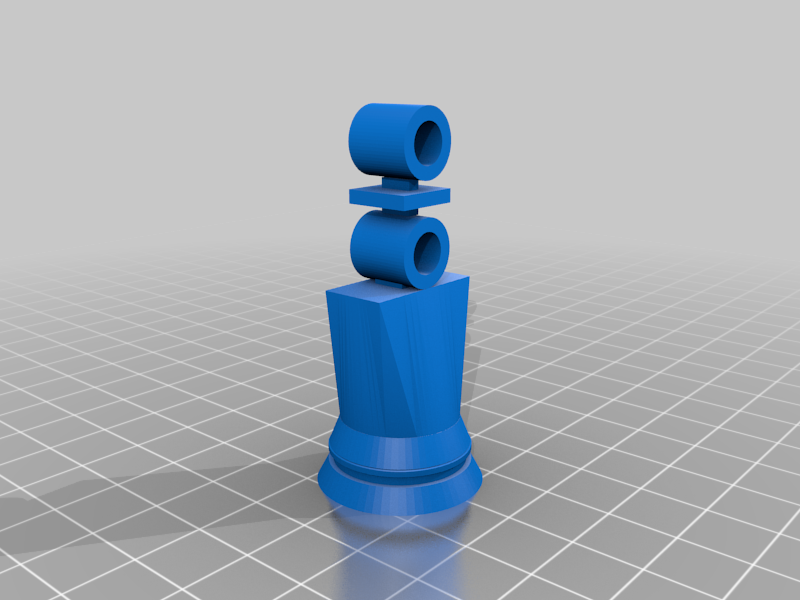
I'd call them Berlin Peon/Anti-Peon & Berlin Storz Pawn/Anti-Storz Pawn. Right Anti-Pawn & Left Anti-Pawn would be rmFrcW & lmFlcW.
I recently have broken my table and then sorted things from it. There were many CV drafts and thoughts, and among them I found pieces based on different time controls of standard chess, but pieces weren’t usual at all. One of them is Bullet, but I can call it Storm Trooper. It moves straight up to 4 forward, 1 backward (both are with or without taking), and also 1 sideways without taking, but there it can push one piece (if square isn’t free) in this direction: same logic as my Shieldholder from NDPRC and Horizons.
Given that the practice of "Left" and "Right" has a history in Shogi -- where simply "Left" and "Right" are used in all English translations of which I'm aware* -- I think I'll leave that much as it is.
On the same principle, since those names refer to position, I do think it'd be better to switch the two as far as their moves.
*Allowing that I've been at this for a relatively short time.
Given that I usually call for "left" and "right" to be for placement, it may be better to reverse these moves. Opinions on that question are welcome.
My opinion is, don't leave it ambiguous! Even if you use it consistently it will be confusing. If the name refers to the location make it something like "Left Side Berolina Pawn" and if it refers to direction make it "Leftwards Berolina Pawn".
273. Left Berolina Pawn, and 274. Right Berolina Pawn. I had a kind of weird day yesterday; among other things, I hadn't selected a Piece of the Day for today, and as I was hunting around the best I could find was a two-piece pair. Since it was late in the day, I decided to just wait for morning and do them together.
While I was compiling the Icon Clearinghouse, I came across images for these two pieces, but without any clue as to how they were supposed to move. So, I made my guess: I simply turned the standard Berolina's movement 45 degrees.
That gives the Left Berolina Pawn a non-capturing move of 1 space orthogonally forward or to the right, with an optional 2-space move as an opening, and a capturing move of one space diagonally forward and to the right. (mfrWcfrFimfrnD)

And of course the Right Berolina Pawn does the same thing to the left. (mflWcflFimflnD)

As usual with such pieces, "left" and "right" refer to where the pieces should be placed in the lineup, not the direction in which they move.*
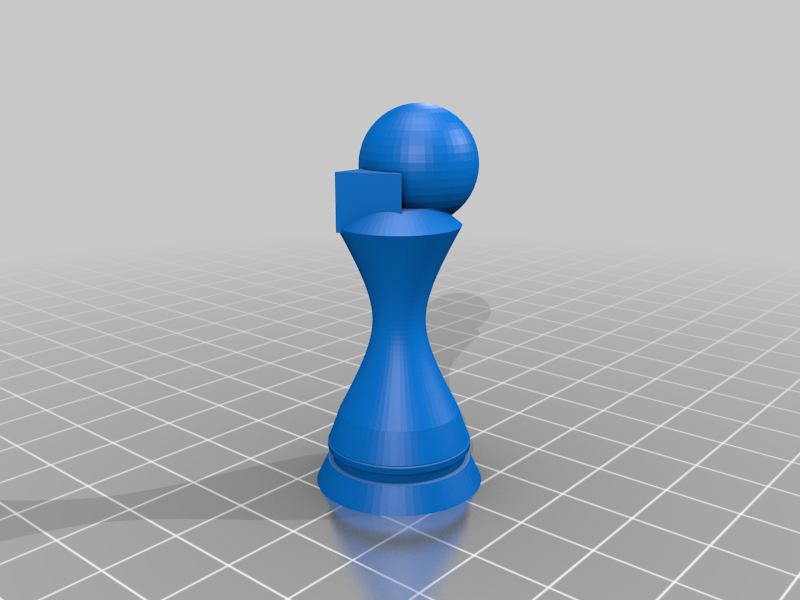
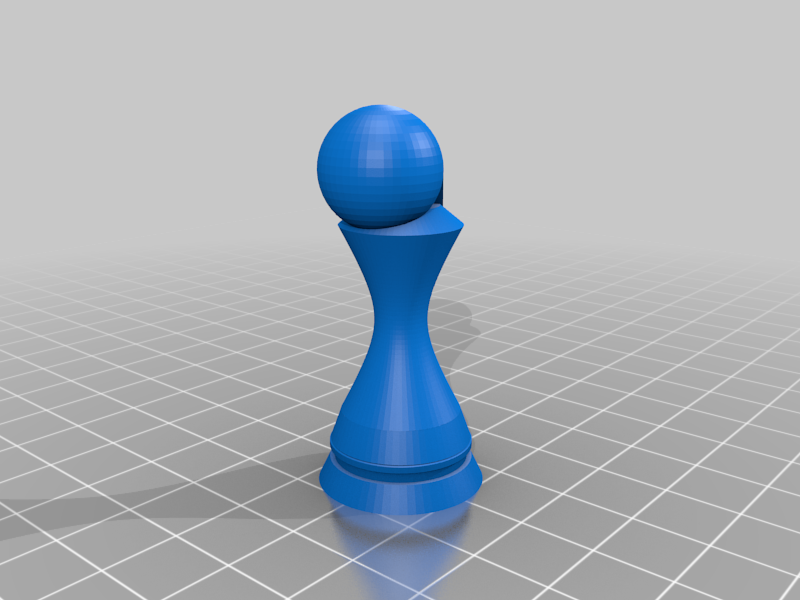
The models are just modified Berolina Pawns, with the head not represented by the name (right on the Left Berolina, and vice versa) replaced by a triangular block pointing forward.
*I'd originally done that the other way around, leading to the discussion in the next couple of replies.
Actually, according to the article on the Dalai Lama:
The name "Dalai Lama" is a combination of the Mongolic word dalai meaning "ocean" or "great" (coming from Mongolian title Dalaiyin qan or Dalaiin khan, translated as Gyatso or rgya-mtsho in Tibetan) and the Tibetan word བླ་མ་ (bla-ma) meaning "master, guru".
The Buddhist Lama and the Assyrian Lama just happen to be two words from different languages that happen to sound the same, no more related to each other than either is to the animal classification of llama.
Thanks. Now we know where the word Dalai Lama comes from.
272. Lamassu. This being from Assyrian legend (also called a shedu) was mentioned in conversation a few days ago, and I immediately (one might even say reflexively) started thinking about how such a piece could be represented on the board.
A lamassu is described as "having a human head, the body of a bull or a lion, and bird wings." The bull seems to dominate the overall description,* and also seems much easier to iimplement in this context, so I went with that; but a bull what? Bison or Buffalo seem obvious, but Aurochs is also possible.
What bird piece to use is also subject to a choice. The most familiar bird-based pieces are Raven, Hawk, and Eagle; of these, the Raven is in between the other two and seems the most reasonable. Plus, the Nightrider-based part of its move covers the Bison/Buffalo dillemma, so it helps with that decision.
Adding the Man (for the human head), we get a piece that slides orthogonally like a Rook; steps one space diagonally; leaps (1,3) or (2,3) like a Camel or Zebra; or makes one or more (1,2) Knight leaps in a straight line. (RFCZNN)

(I missed including c12 as part of the Nightrider move; sorry about that.)
This only occurred to me just now, but I think it might also be interesting to see how things would fall if I'd chosen to go with the Aurochs and Hawk.

Making the piece was a more of a challenge than it looks. There's no indication of lamassu having a bull's horns, but how else to indicate the bull part of the construct in an upright piece? If nothing else, this necessary bit of artistic license should make the piece distinctive on the board.
*That's my general sense when reading about it, anyway. I could be wrong.
Brain glitch -- I've no idea why I put R and B instead of W and F. As for nHH, I just didn't think of it... I'll go fix those in just a wee bit.
Thanks for the catch!
 H. G. Muller wrote on Sat, Apr 13 04:57 AM UTC:
H. G. Muller wrote on Sat, Apr 13 04:57 AM UTC:W and F instead of R and B. And afaf(afafaf)W can be written as nHH, a non-jumping Threerider. [W?nHH] for the other move does not work yet. (It ignores the n.) Eventually it should be possible to write this as [W(?nD?W)].
269. Limping Bishop, 270. Limping Rook, and 271. Limping Queen. This was not what I'd planned for today, but Thingiverse is having some technical issues with adding new parts, so I'm going with these.
After seeing many variations on sliders -- ski, skip, slip, spotted, and so on -- I've seen skips of one or two spaces, either one-time or repeated; and I thought, what if a piece had to move three spaces at a time? Well, it wouldn't be much use, I decided; but two out of three seemed viable.
These "Limping" pieces can only move a number of spaces that's either a multiple of 3, or 1 greater than a multiple; in other words, 1, 3, 4, 6, 7, 9, 10, and so forth. The Limping Bishop, therefore, is afaf(afafaf)FnGG, while the Limping Rook is afaf(afafaf)WnHH.*
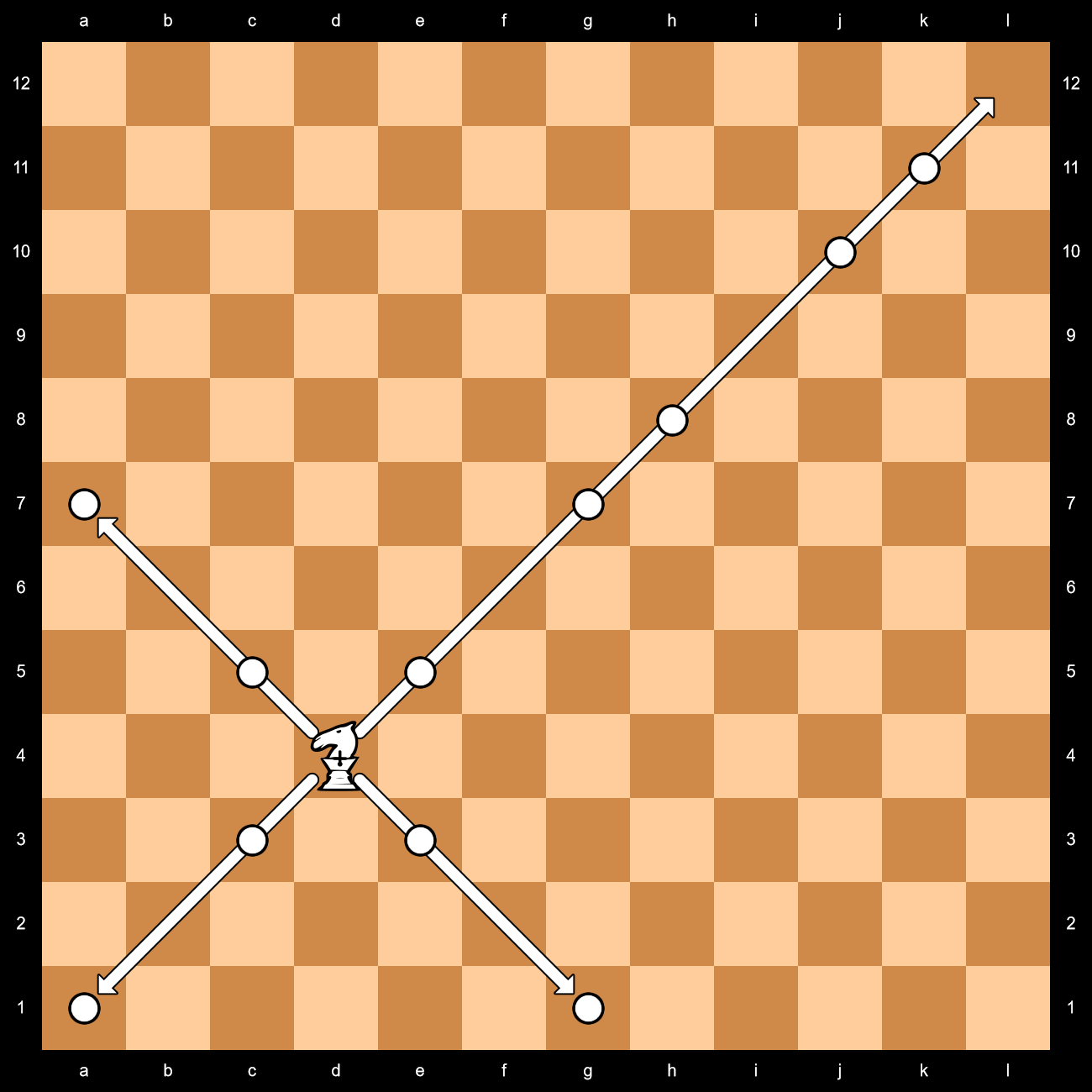

In a way, it resembles a skipping step, and I'd call these "Skipping" pieces if that wasn't already taken.
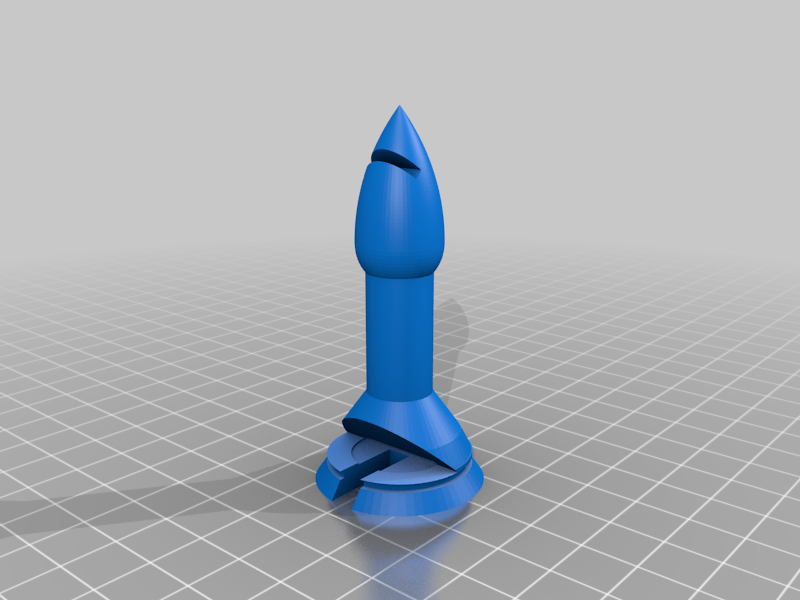
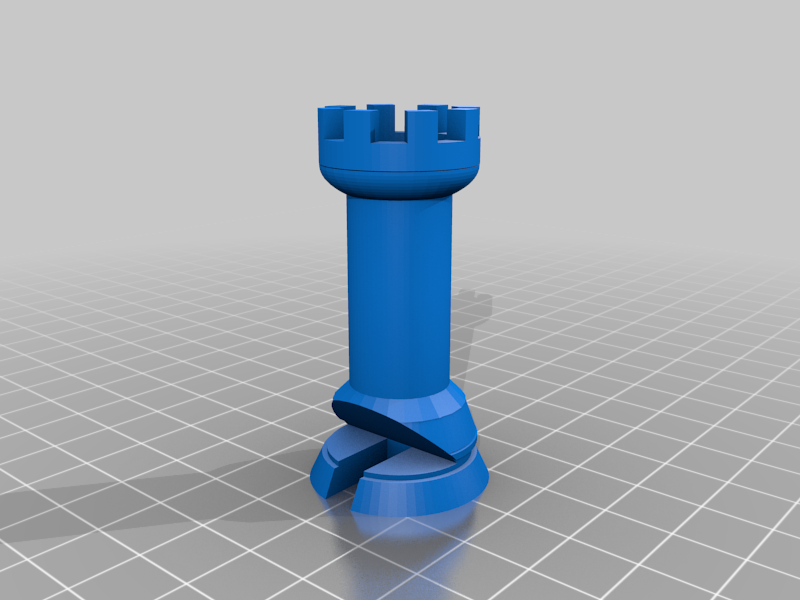
And, obviously, the Limping Queen combines the two moves. (afaf(afafaf)KnSS)
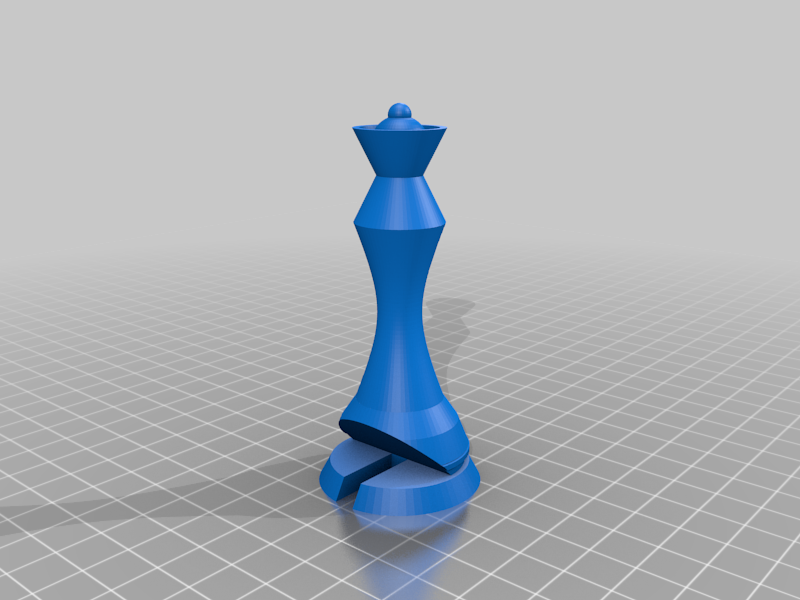
These models are the first time I've sliced open the bases of my pieces, and (from the looks of that Bishop) I think I may need to check them and fill them in.
And of course there are two other possibilities for which step out of three to skip over; they just need good names!
*As H. G. Muller points out in a reply to this, the logical way to write these would be [F?nGG]nGG and [W?nHH]nHH, but as of this moment bracket notation doesn't handle certain things -- such as those combinations -- correctly. (Yet.)
268. Baseball Bat (Hitter, Slugger, Bat). This is the last of the Clue-related pieces that I'll be posting. Within the next couple of days I'll bring together all five of the pieces that I'm considering for use in Clue Chess, including this one, for comparison with each other and the seven that I've settled on.
Since this piece is a Baseball Bat, I thought that some sort of baseball-related move would be appropriate. Therefore, the Baseball Bat can step up to two spaces diagonally, then turns left and goes two more spaces, and then repeats the process twice more. This lets it approximate the move of a runner going around a baseball diamond, which is reinforced by the fact that it can only capture at the corners. To keep it from becoming colorbound, the Baseball Bat also can move without capture one space orthogonally. (m(afal)3Fn(aln)3AmW)

On a large board -- 12x12 at a minimum (the Clue Chess board will be 25x25) -- the Baseball Bat can also rifle-capture on the "Root-65 leap" move given to the Bat (as an animal) in some games. This is a leap of (1,8) or (7,4). (m(afal)3Fn(aln)3AmWcabNXXcabAXY)

As I inidicated at the start, alternate names for this can include Hitter, Slugger, or just Bat.

266. Crossing Bishop. and 267. Crossing Rook. I had been going to do something else today, but then I realized that tomorrow's going to be pretty busy for me*, so I'd be better off putting up a pair for today and tomorrow. Tune in Thursday for what had been going to be today's.
The Crossing Bishop was first proposed by Ralph Betza in his article on Bent Riders. This piece steps one space diagonally like a Ferz, then turns 90° to slide like a Bishop. ([F?sB])
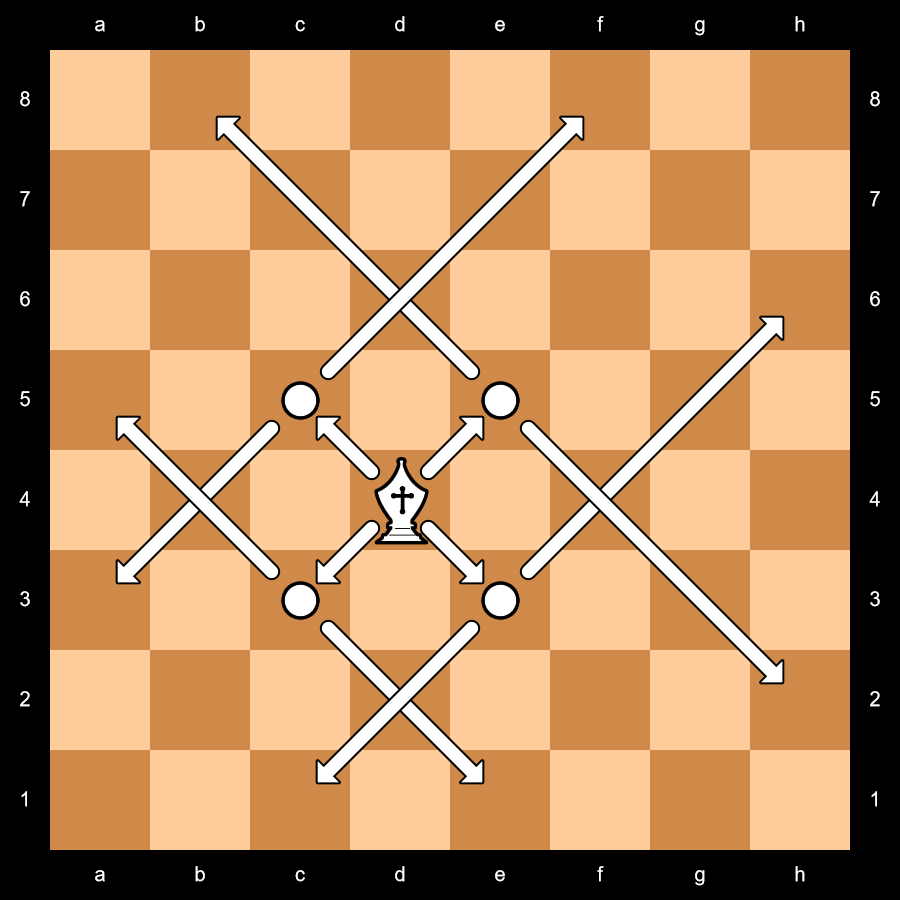
It's fairly easy to extrapolate a Crossing Rook from that, as stepping one space like a Wazir, then turning 90° to slide like a Rook. ([W?sR])
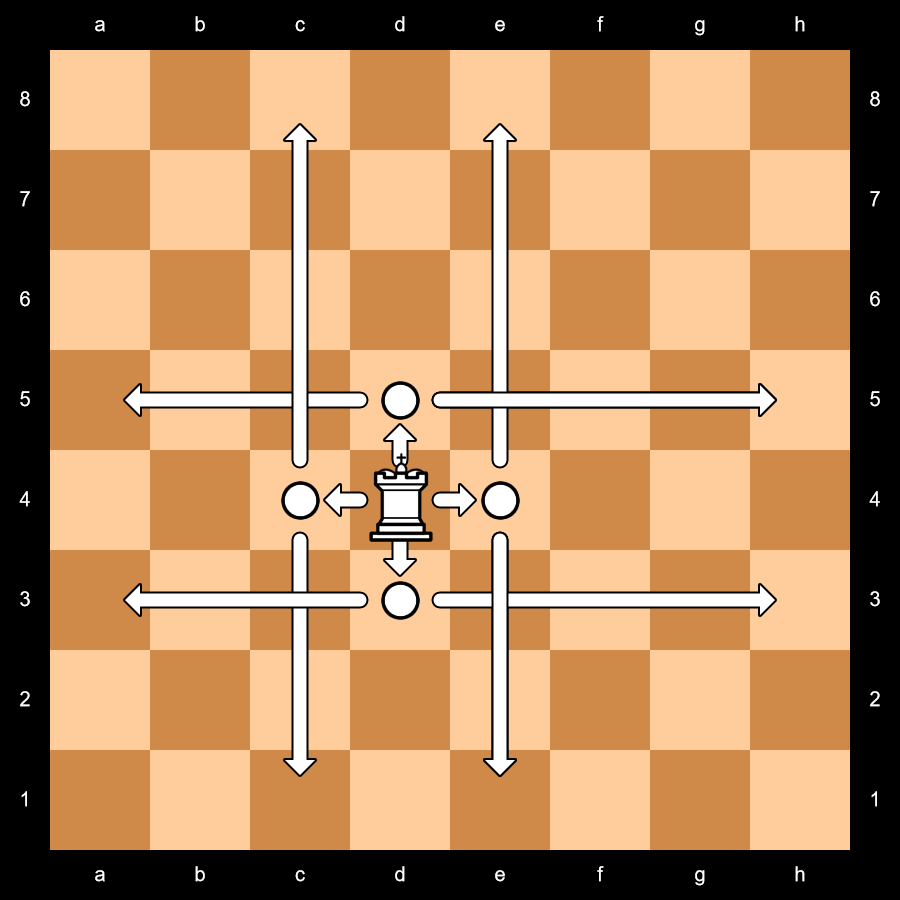
Other Crossing pieces are possible too, of course; the Crossing Queen would combine these two, while there could also be a Crossing Nightrider, Crossing Camelrider, Crossing Raven, and so forth.
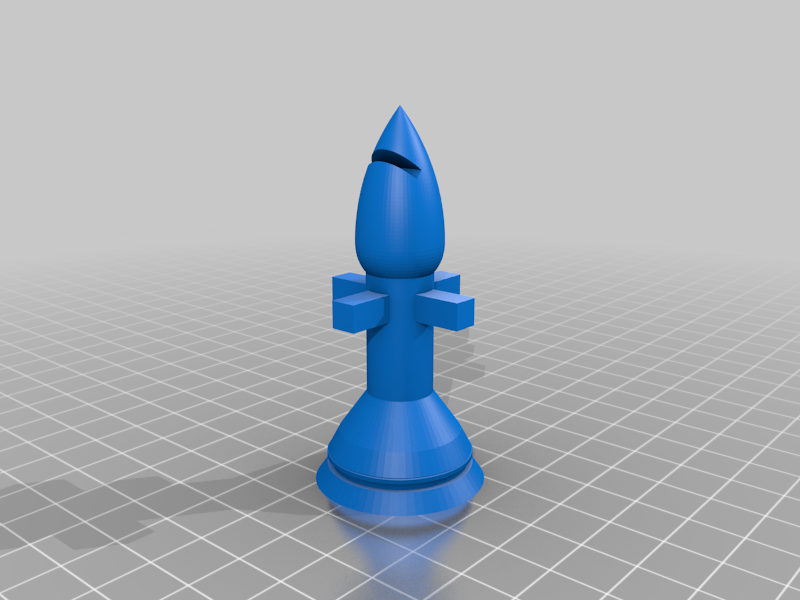
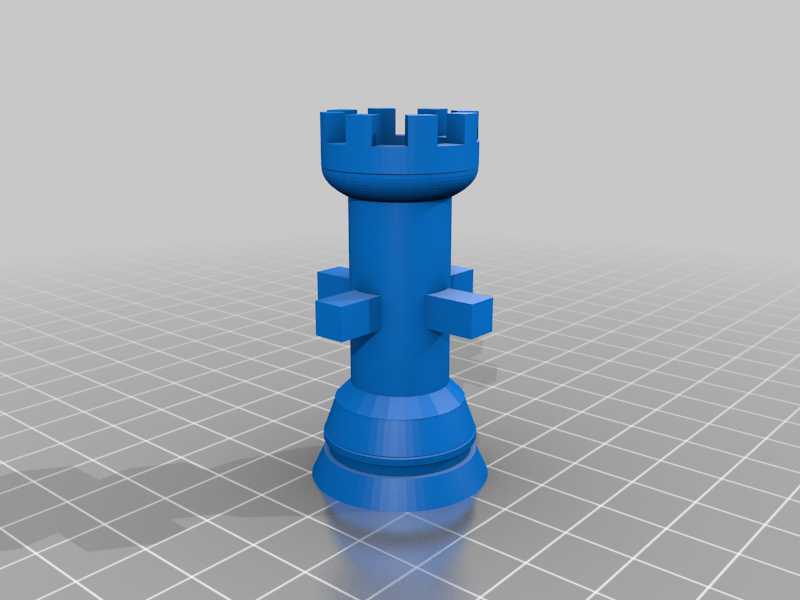
*I'm going out of town for eye surgery.
263. Punk Bishop, 264. Punk Rook, and 265. Punk Queen. These are all extension of the Punk Knight earlier this week, though it was figuring out the moves for these that gave me the move for the Punk Knight.
The Punk Bishop slides diagonally like an orthodox Bishop, but does not capture at its destination square. Instead, it captures at the first square it passes through, and/or the square just before its destination. (mB[cF-fmB?fcF][cB-fmF])

In this illustration, the White Punk Bishop can capture the Black Knight and move as far as the corner, or the Black Rook and land on the space just beyond; or it can capture both the Black Pawn and Black Bishop. The Black King is not in check, because there's no space beyond it for the White Punk Bishop to land on.
The Punk Rook does the same thing, but orthogonally. (mR[cW-fmR?fcW][cR-fmW])

The White Punk Rook's situation here is similar to the Punk Bishop's above. Note the empty space between the Black Pawn and Black Rook here; if there was another piece there, the Punk Rook would be unable to move in that direction.
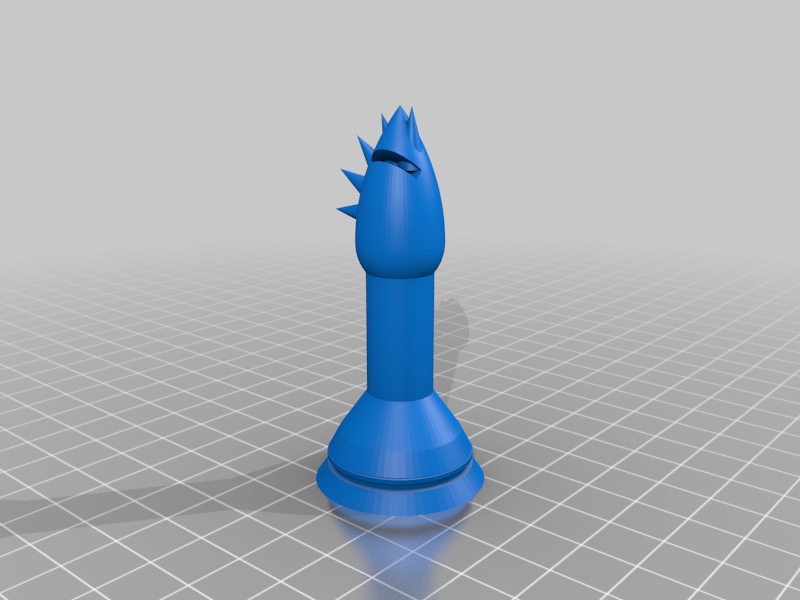

The angle on the Punk Rook doesn't quite show the spikes properly, but there's enough there to give you the idea.
Of course (anticipating Monday), the Punk Queen combines the moves of these two.

I'm not sure how well I could model any of those birds, in a way that's distinctive from what I already have. (Plus, I had this weekend's pair set early this week, as well as next weekend's.)
I have imagined new pieces now, ideal for your weekend pair.
Black Vulture (Ski-Bishop+Condor), Peregrine Falcon (Ski-Rook+Osprey).
Also, to fit the theme; I’ve suddenly looked at my notebook, seen thin points and imagined ambiguous Fighting Cockerel (cKfW or obscene vice-versa). Like pawn but not pawn.
262. Forfrulqubakzeking. A recent creation by HaruNY for his Zen Zebras army in Chess with Different Armies, this piece with the nigh-unpronounceable* name moves forward or sideways like a Queen, or backwards like a King or Zebra. (fhsQKbhZ)**

The piece does have a forward bias to its move, but not enough that I'd consider it qualified as a Spear (except on an extraordinarily large board of at least 20x20).

For the model, the King is replaced by a Man; otherwise, it's left whole, just as is the King's move in the notation (the Queen's move covers it, so there's no need for modifiers). It's otherwise a forward Queen, backward Zebra.
I find the fact that the name, move, and model are all messy to be quite synchronous. For the latter two, that's a good thing, but for the first, not so much; I wish a clearer name could be used. Even something based on my own notation (like Fhasqkibhiz — "FAS ki biz"***) would be easier to deal with.
*Even for me, and I'm generally pretty good at that sort of thing.
**The name is based on the original notation of fhrlQbhJK.
***With the F and B aspirated, if you're into that level of linguistics.
261. Carousel. After all this complex stuff, it's time for something with a simple move and notation. The Carousel leaps three spaces diagonally or orthogonally, or (1,2) like a Knight. (NT)
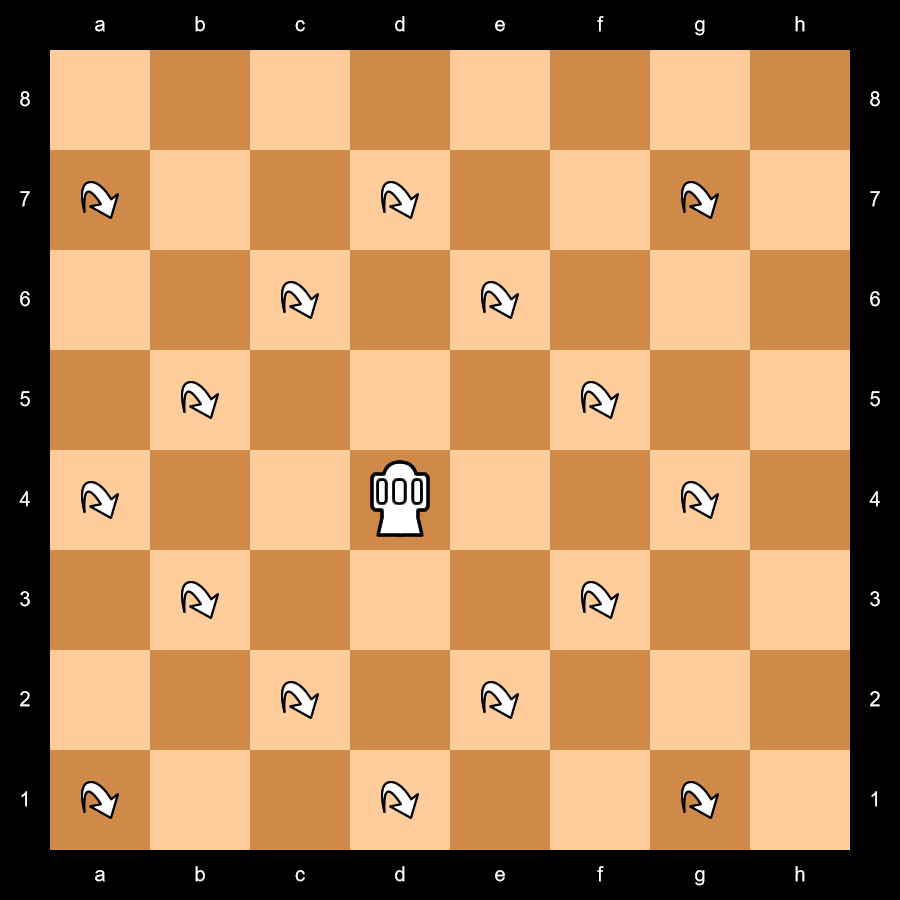
I'm not aware of any other pieces with the same move; but if there are any, I'll be glad to see them acknowledged.

The model is designed to represent both the name and the move, with the top resembling a carousel with eight poles representing the eight directions of the three-space leaps.
25 comments displayed
Permalink to the exact comments currently displayed.
For an eighth weapon, have you considered a blowgun?